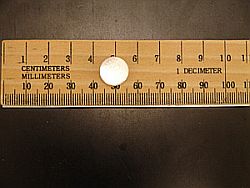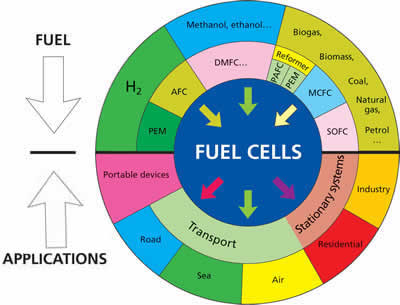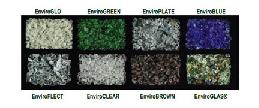
We often see the future of energy in fuel cells, but going by the cost and the problems in deploying these cells in next-gen cars has always been a major issue for the researchers. Scientists are coming up with techniques that can better the properties and distribution of fuel cells.
Fuel Cells:
A Fuel cell is an electrochemical energy conversion device. It produces electricity from external supplies of fuel and oxidant that react in the presence of an electrolyte. These cells can continue operation as long as the supplies are maintained. These cells are different from batteries because they consume the reactants, which need to be replenished time and again. Fuel cells can be powered with a number of combinations. A hydrogen cell for example uses hydrogen as the fuel and oxygen as an oxidant.
Limitations of fuel cells:
Though promising, fuel cells are not always considered the best alternative to petroleum. They come with many drawbacks that include:
1) Cost issue:
The current fuel cell development process makes use of materials such as platinum, which puts a question on their feasibility in the global market.
2) Flow Control:
Just as in a combustion engine, a steady ratio between the reactants and oxygen is necessary to keep the fuel cell operating efficiently.
3) Temperature Management:
Fuel cells can get damaged if the same temperature is not maintained throughout the cell at all times. This gets challenging in most cases as many reactions inside a fuel cell are exothermic, which means that heat is released when the products react.
4) Safety issue:
The transfer of hydrogen in a car or any moving machine needs to be dealt with as hydrogen is an inflammable gas and its leak cannot be detected just like that in a gasoline engine. This means car manufactures have to develop safe techniques to store hydrogen.
Upcoming Fuel Cell Technologies:
Scientists have cooked up new technologies that should cover some of the drawbacks of fuel cells. These scientists have come up with technologies such as a pellet system that could make these cells safe and a system that uses microbes in a cow’s guts as a fuel in fuel cells.

Since the advent of hydrogen-based fuel cells, their safety has always remained an issue. Hydrogen being combustible needs special distribution techniques that promise easy and safe gas transfer and better engine performance.
Pellets that can pack a lot of hydrogen inside can prove beneficial. Purdue researchers have recently developed a system that can extract hydrogen from water using aluminum pellets but these scientists have not hesitated in stating that the raw material of the system is too expensive to compete in today’s economy. Researchers at the Pacific Northwest National Laboratory are developing a different approach. They have developed compressed pellets of ammonia borane that are about the size of aspirin tablets are just two pellets are required to store the equivalent of a liter of hydrogen. The best feature of these pellets is that after they release all the packed hydrogen they can be reprocessed for reuse.
Despite being a safer alternative, these pellet based cells also take up less space and weigh less than systems using pressurized hydrogen gas. The system can help in making fuel cell cars that are comparable to today’s gasoline powered cars. Researchers are also working on ways to improve the discharge of hydrogen from these cells so that accelerating a car might be as simple as stepping on the gas pedal.
Cow manure powered Fuel Cells:
The idea of generating electricity from cow manure is not new and some farmers have even been extracting hydrogen from the methane for fuel cells. A team of researchers at the Ohio State University have been experimenting with a different type of cow power to be used in fuel cells. They are extracting microbe-rich fluid from the largest chamber of a cow’s stomach, known as Rumen. The microbes in the fluid can be used to produce an electric current as the break down cellulose in a specially designed biofuel cells.
The fluid is collected from the cow’s stomach via a surgically implanted tube, this fluid is then mixed with cellulose in one chamber that acts as a fuel and potassium ferricyanide in the other that acts as an oxidant. As the cellulose is eaten-up by the microbe-rich fluid electrons are released, which then flow from one chamber to another, setting up a circuit.
For now this technique is not able to generate large quantities of current, but future advancements can make them smaller and more efficient so that tiny fuel cells can take on bigger and bigger jobs.
Another good feature of these cells is that the cellulose used up in the reaction can be harvested from crop waste, wastepaper and even wood, making it a truly eco-friendly option. The lifetime of these cells is good so you don’t have to spend on biofuel cells every month.




